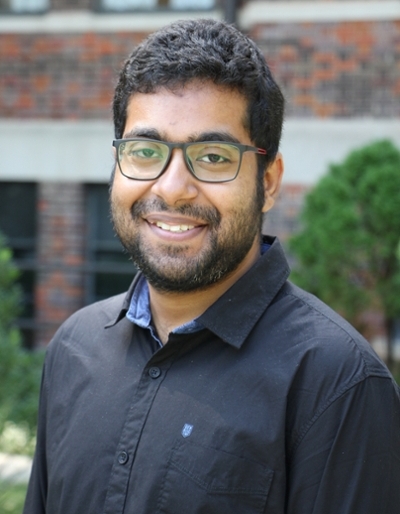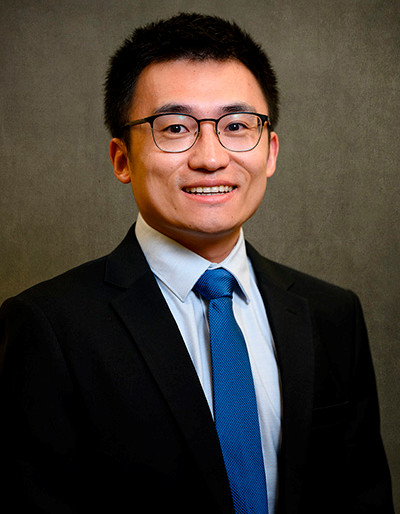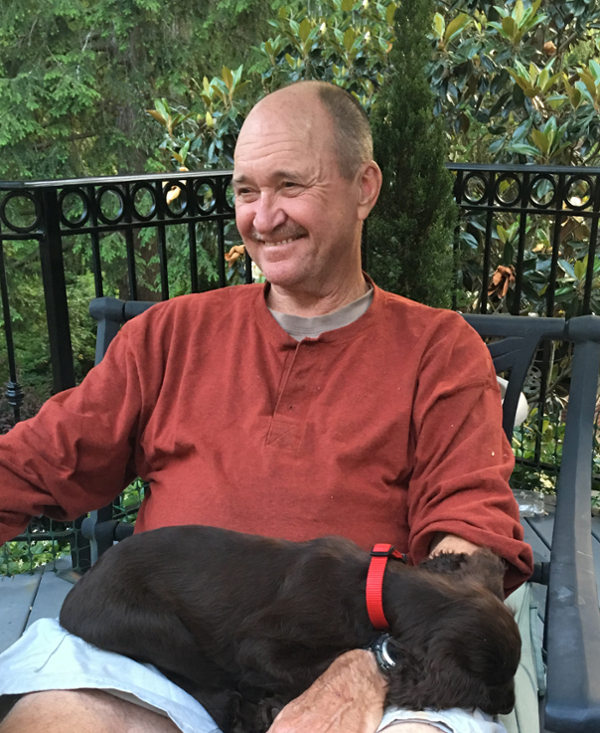
Maloney Fellowship
About the Maloney Fellowship
The Maloney Fellowship provides supplemental support for graduate students at all levels who have an interest in applied price theory and corporate finance.
Current Maloney Fellowships:

Srijan Banerjee was born in Kolkata, India, in 1994. He received his bachelor's and master's degrees in Economics from the University of Calcutta, India. He has also served as a Research Assistant at the Center for Studies in Social Sciences in Calcutta, India. Banerjee is currently a sixth-year Ph.D. student in the John E. Walker Department of Economics at Clemson University. His research interests are primarily in the areas of macroeconomics and labor economics. His current research explores the role of differences in experience and worker skill development over the life cycle in shaping the black-white male unemployment gap in the US.

Youwei Xing is an economic historian interested in public economics and political economy. His research focuses on the role of transportation infrastructure during the early stages of economic modernization. He has studied how the 19th-century canal system reduced transportation costs, facilitated long-distance trade, changed economic structures, promoted urbanization and expanded financial and market-oriented activities. His work also studies how canals influenced antebellum American politics by shaping the political choices made by voters and politicians. Most of his current research centers on 19th-century New York. He aims to be a thoughtful economic historian and make meaningful contributions to the field. He has worked with Howard Bodenhorn throughout his six years at Clemson.
A window on the history of the Clemson Department of Economics by Michael T. Maloney

I was born in Jackson, Mississippi, on December 7, 1949, on Pearl Harbor Day. My father was at Pearl Harbor when it was bombed. My greatest regret in life is not querying him more about that chaotic event. All he ever said was that he was shaving for Mass when the first bombs went off.
I got my Ph.D. at LSU. I had a field in quantitative methods (management department). After the qualifying exam, I was sure I failed, but instead, they passed me with distinction. Sometimes, you just never know. From that same department, I took a simulation class. The final was a take-home problem that we were to simulate in FORTRAN. I got a program to compile, but the answers wouldn't converge. I shared it with my friends, who hadn't even gotten that far. In the end, I just turned it in. My friends turned it in, too, but stapled fake output to the back, showing a solution. They got A's, and I got a B. You just have to laugh.
I came to Clemson in '74. I passed up better offers because I liked what the people here were doing. I met Bobby McCormick on my first visit, and we became fast friends from then on. My major professor at LSU was part of the cohort of grad students at UVa when Jim Buchanan and Gordon Tullock were there. There was and is a strong UVa influence in the Clemson Economics department.
Bruce Yandle was the department head1, Hugh Macaulay was the senior member, Wallace Travillian (UVa) was the dean and Clint Whitehurst, who wrote for Coase at UVa, was the senior member of the industrial management department. On my recruitment visit, we were chatting in the hall about some nuances of the Coase Theorem. Hugh said something, and I said, "That's just wrong." Hugh immediately went to the dean and said, "Hire that boy." It was a lively department.
Bobby went to Texas A&M the next year, where he wrote for Bob Tollison. He came back for a year and then went to Rochester for several years. I slipped off to Emory in 1981. Matt Lindsay, also a Buchanan student, had left UCLA and moved to his childhood home in Atlanta. Emory had just gotten a boatload of Coca-Cola money. Matt talked me into joining him. But then Clemson got a new dean, Ryan Amacher, a UVa classmate of Matt and Bob, who got some money and hired Bob. Tollison got Bobby to come back, and Bobby got me to come back. Shortly after, we got some more money and were able to bring Matt to Clemson. Bob left (still in his wanderlust stage, but he came back after a while), but Bobby, Matt, and I stayed.
The biggest thing that happened in those early days was that we started the Ph.D. program. It was an outgrowth of the Ph.D. in Ag Econ, which had been around for some time. Some (not all) of the ag guys thought that the econ department was gaining national recognition and saw value for students in making the program joint between the departments. I was tasked with forging that link, which, by fits and starts, I did. The final step was taken in a joint meeting of the two departments, chaired by the provost, David Maxwell (also an economist and dean at TAMU when Bobby and Bob were there). The meeting was raucous, but the final vote, with some significant dissent among the ag guys, was in favor of the joint program.
The next year, I took over as department head and recruited our first set of Ph.D. students. I promptly lost all my hair, worrying about how we would get them jobs. We have had a lot of great graduate students, both master's and Ph.D. Mark Mitchell was our first Ph.D. graduate and has been demonstrably successful, but a core part of the Clemson spirit, which was here when I came, was and is to encourage students to enjoy scholarship for its own sake. I think all of our graduate students have been successful in that regard, and I take great pride in all of their accomplishments, large and small. I remember talking to Mark about coming back to do a Ph.D. He had just finished his master's here and was mowing grass at his parents' restaurant in Louisiana.
Getting the Ph.D. program off the ground was a big deal, but hiring was too. Matt and I were largely focused on hiring and filling the chair Bob Tollison had left. Senior hiring is really hard. If you want them, they don't want you, and if they want you, you don't want them. I think that everyone will say we got fabulously lucky to have hired Don Gordon. Don was a world-class scholar. He had an intellect that was penetrating, and he was a sociable fellow who became a part of our convivial crowd. Matt has to get all the credit for talking Don into coming to Clemson. Because Don came, we were able to attract Bill Dougan and Skip Sauer, who both had their own dynastic influence on the department.
Funny story about Skip: on his recruiting visit, Don and I were at one end of a long table, and Skip was at the other in a heated exchange with some group. At one point, Skip stood up and said, "You all are the stupidest bunch of people I have ever been around." Don turned to me and said, "Hire that boy."
In research, an academic vita tells its own story. Nonetheless, I think a few points are worth noting. "Bubbles and Efficiency," with Bruce Yandle, Regulation, May/June 1980: This paper came from some data Bruce got from DuPont on engineering estimates of the cost of 75% pollution control of each point source across their entire enterprise. We came up with a way of turning that into a cost function for variable levels of control and showed the cost advantage of cleaning up some more than others. This was the genesis of tradable emission rights.
"A Positive Theory of Environmental Quality Regulation," with R.E. McCormick, Journal of Law & Economics, April 1982: This paper has some pretty interesting theory that generalizes an idea in a paper by Buchanan & Tullock. I recall Tullock being impressed that we had written the theory before we found his paper. I also recall one of Bobby's Rochester colleagues being annoyed at us for screaming at each other as I was trying to tell Bobby why I was right and he was wrong about the theoretical structure. Might have been the reverse. This paper was also one of the first to set off the stock-market, event-study tsunami.
"The Complexity of Price Discovery in an Efficient Market: The Stock Market Reaction to the Challenger Crash," with Harold Mulherin, Journal of Corporate Finance, Sept. 2003: Harold (RIP) and I picked up this investigation after one of my master's students did an event study of the Challenger disaster. We worked on it for more than ten years before we got what we thought was a good story with convincing evidence. I hired Harold over the phone on a 2nd hand recommendation from Ben Klein through Matt, and because he was from Savannah. Harold was fun to work with. We also played hard, especially while fishing and especially with Skip.
1Bruce wrote for Jim Miller, UVa classmate of Tollison and Lindsay.
